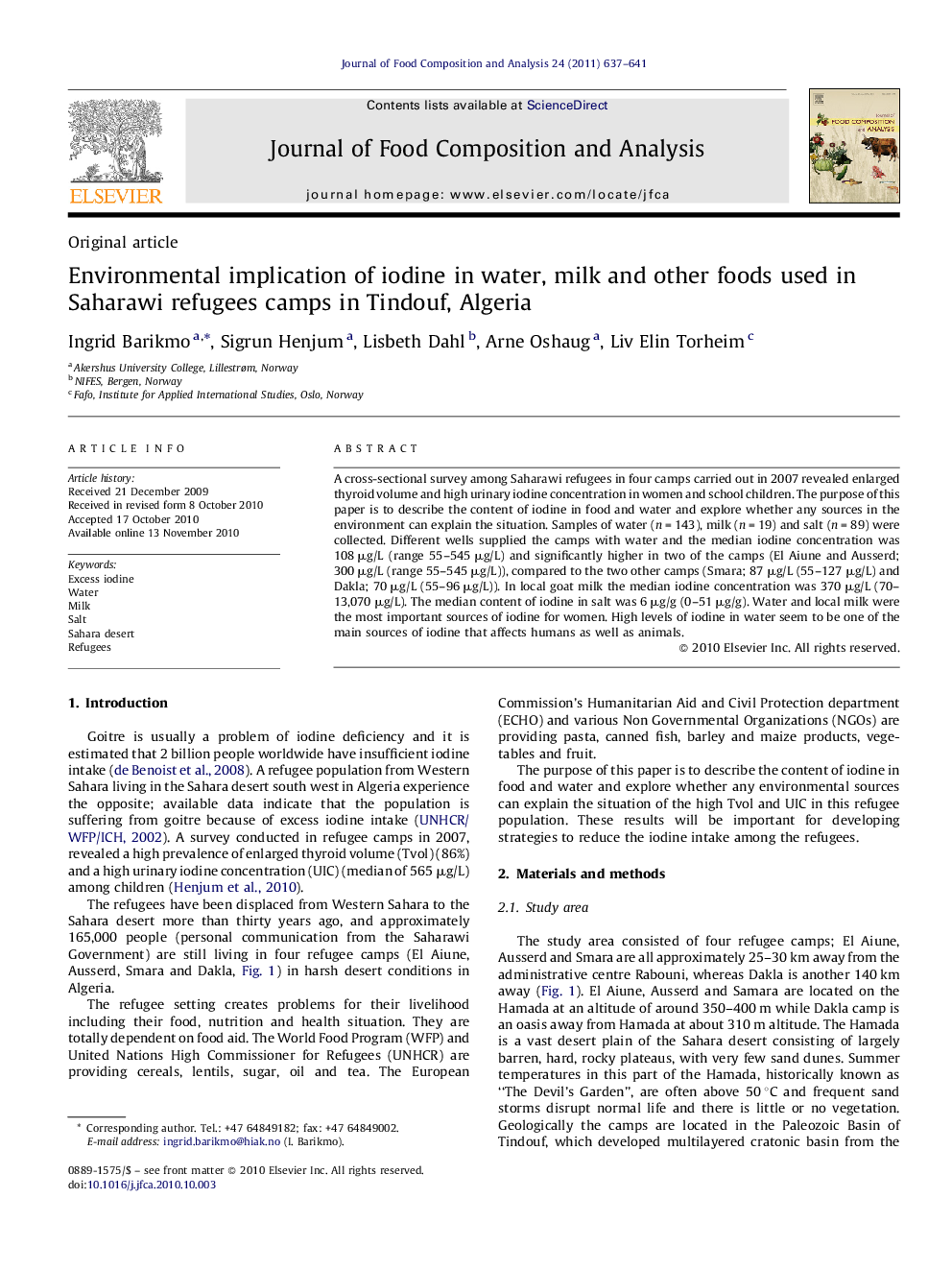| Article ID | Journal | Published Year | Pages | File Type |
|---|---|---|---|---|
| 7620979 | Journal of Food Composition and Analysis | 2011 | 5 Pages |
Abstract
A cross-sectional survey among Saharawi refugees in four camps carried out in 2007 revealed enlarged thyroid volume and high urinary iodine concentration in women and school children. The purpose of this paper is to describe the content of iodine in food and water and explore whether any sources in the environment can explain the situation. Samples of water (n = 143), milk (n = 19) and salt (n = 89) were collected. Different wells supplied the camps with water and the median iodine concentration was 108 μg/L (range 55-545 μg/L) and significantly higher in two of the camps (El Aiune and Ausserd; 300 μg/L (range 55-545 μg/L)), compared to the two other camps (Smara; 87 μg/L (55-127 μg/L) and Dakla; 70 μg/L (55-96 μg/L)). In local goat milk the median iodine concentration was 370 μg/L (70-13,070 μg/L). The median content of iodine in salt was 6 μg/g (0-51 μg/g). Water and local milk were the most important sources of iodine for women. High levels of iodine in water seem to be one of the main sources of iodine that affects humans as well as animals.
Keywords
Related Topics
Physical Sciences and Engineering
Chemistry
Analytical Chemistry
Authors
Ingrid Barikmo, Sigrun Henjum, Lisbeth Dahl, Arne Oshaug, Liv Elin Torheim,
